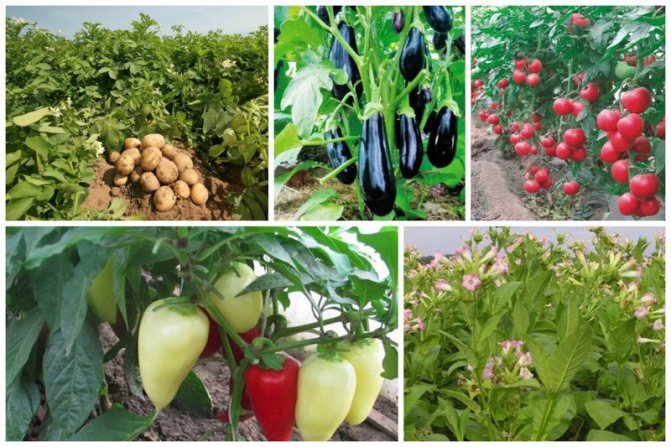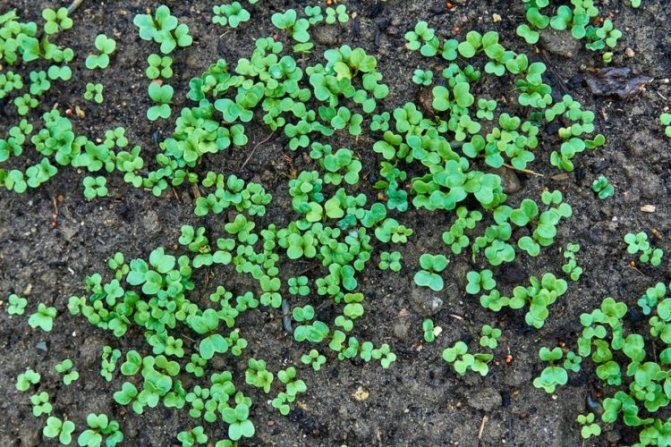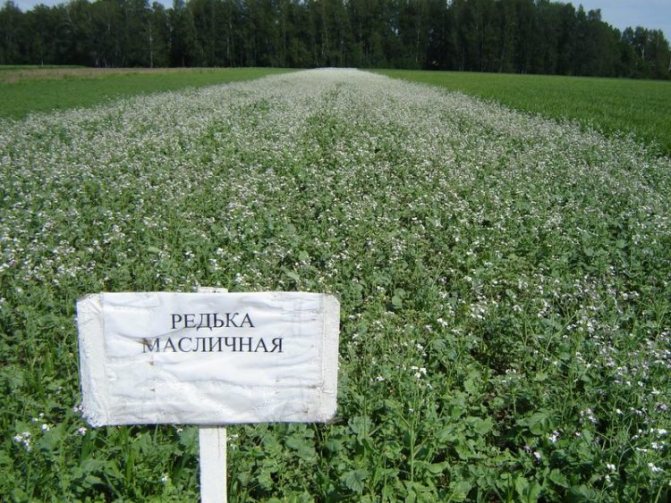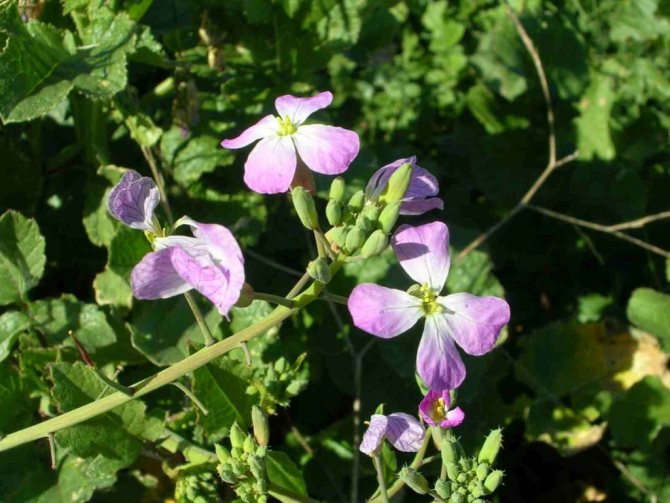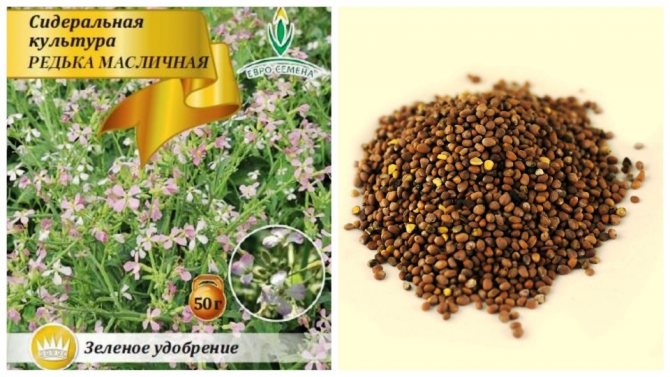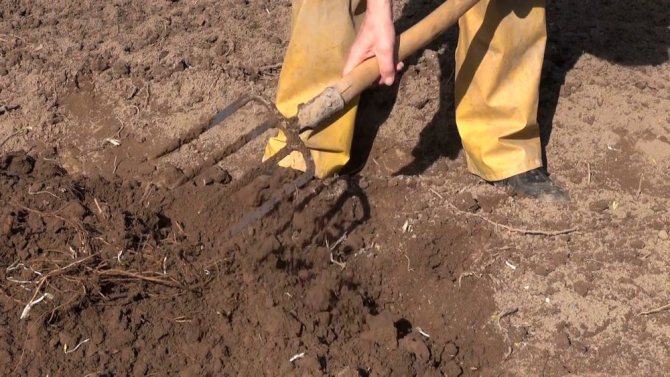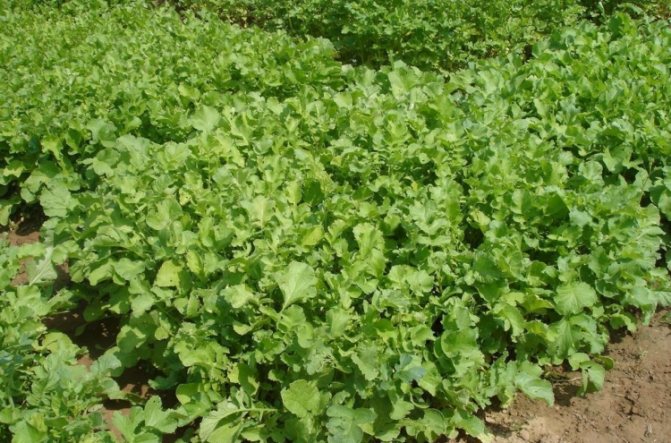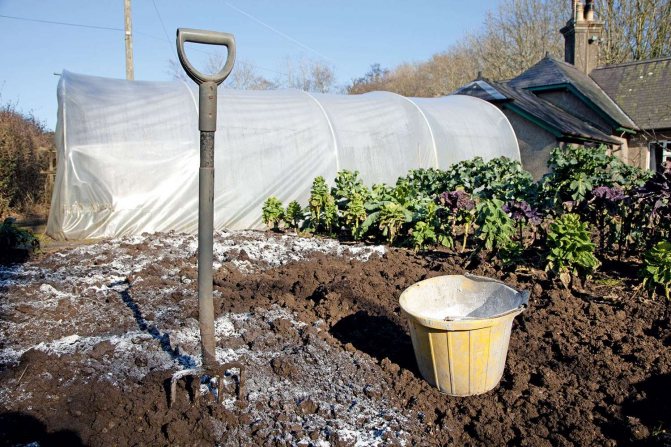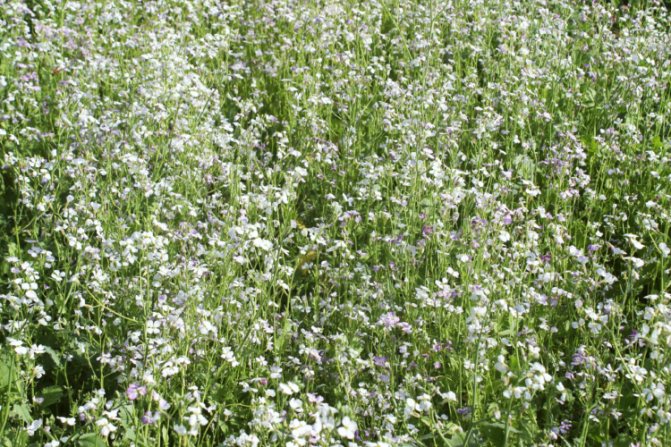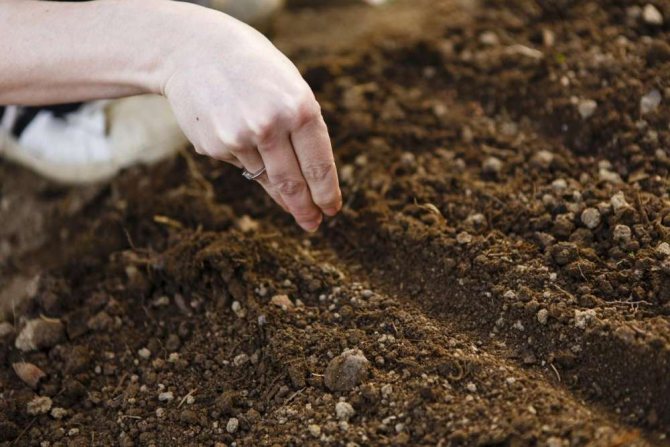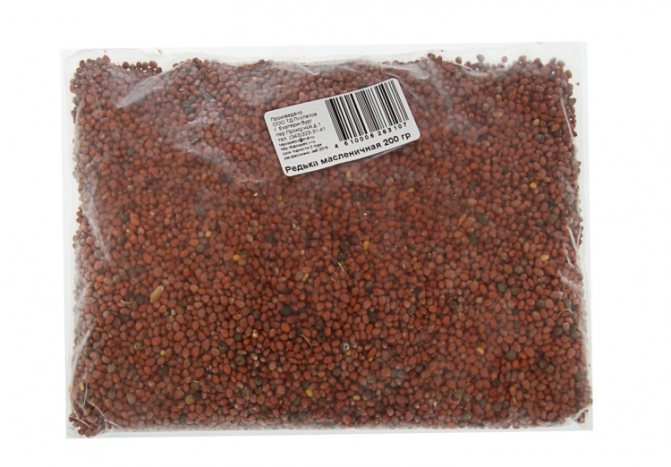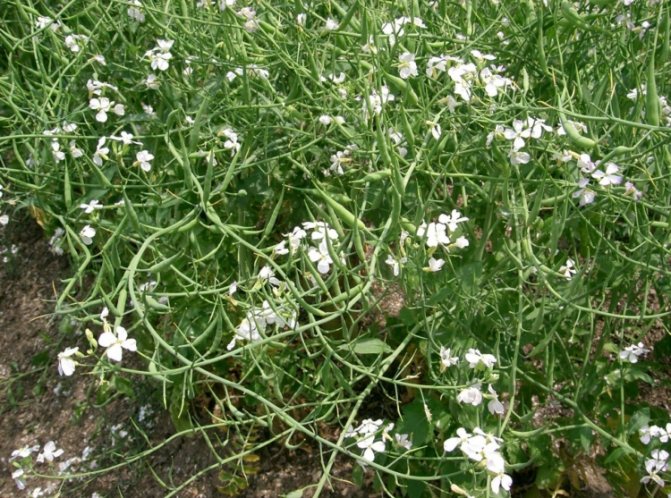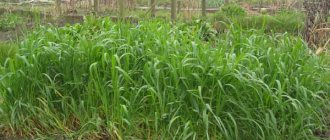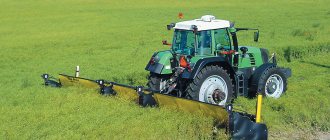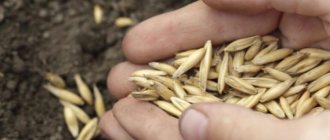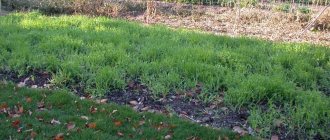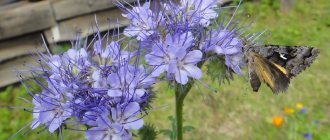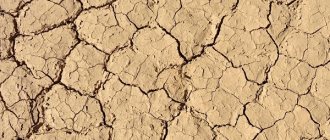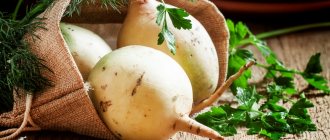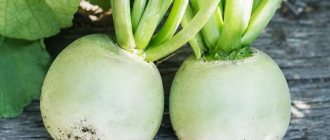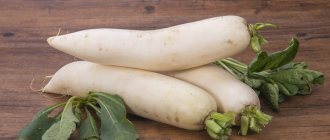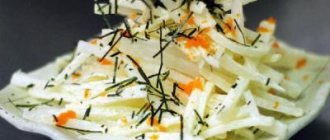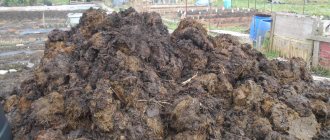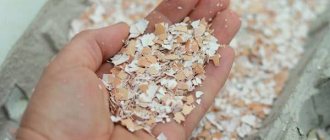The oil radish is a well-known cruciferous plant. It is not suitable for food, however, vegetable growers consider oil radish an invaluable fertilizer. In addition to being a green manure with unique properties, it serves as a fodder crop and honey plant. Grown in private and private farms. Helps prevent soil depletion after vegetable crops, which draw out useful components during their development.
Adherents of culture are adherents of organic farming, which provides for the absence of chemicals on the plots.
A photo of oilseed radish crops is presented below:
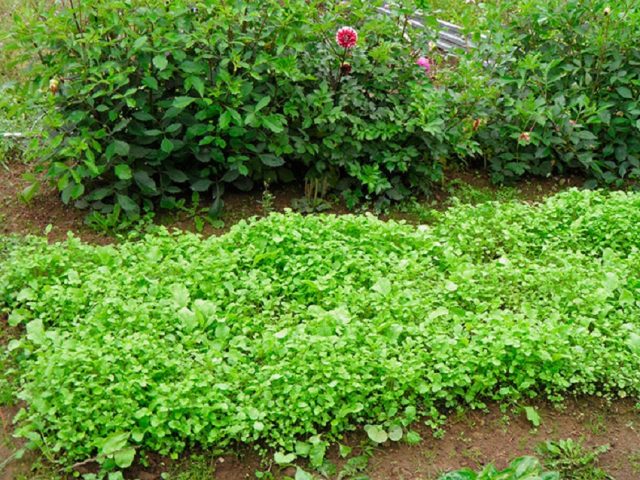
Multifaceted talent
Natural fertilizers from green manure - annual crops sown to improve the soil - are becoming more common. And not only among gardeners, gardeners and owners of small and medium-sized farms, but also in giant agricultural holdings. That is, those who position their products as "environmentally friendly". At least on the grounds that chemically synthesized nitrogen fertilizers are not used in the cultivation of products. Preferring to get them from siderates. A worthy and unpretentious representative of which, the oil radish, occupies a strong place among the green manure crops.
This type of radish does not form a root crop. Its fruits are pods with small, 2-3 mm in diameter, hard and very light seeds. Among the useful properties inherent in this plant is not only its ability to penetrate even the most dense soils, tearing from a monolithic structure. Oil radish also has fleshy, nutrient-rich leaves that are excellent for livestock feed.
Oil radish as siderat
The central root of the plant is powerful and is able to penetrate even the heaviest, clayey soil, to a depth of more than a meter. Clay itself serves as a good waterproofing agent, preventing rain and melt water from penetrating deeply. But radish seeds sown in such soil turn this dense monolith into a loose structure that allows water to pass through in some 40 days.
This is how much time passes from the first shoots to the beginning of flowering of this green manure. Indeed, in addition to the central root, with a layer pushing heavy soils, there are also equally powerful lateral ones. When properly sown, all these roots form a dense network that penetrates the soil in all directions and leaves no cubic centimeter of it a chance to stay firm.
Oil radish is sown from April in the southern regions of the country to mid-May. A quick set of green mass allows you to start harvesting plants for animal feed already on the thirtieth day of the growing season.
Later, you should not do this: during the flowering period in the leaves (and especially in the buds and in the inflorescences), the amount of essential oils sharply increases, which have a bad effect on the digestion of animals fed by it.
But after the first crop is mowed, it will be used as fodder for livestock, the oil radish will continue to grow. Until the end of the summer season, up to 3 harvests can be harvested. The latter, after mowing, is immediately plowed into the ground and left like that until next year.
This technology allows you to saturate the soil with nitrogen, which will be produced by soil bacteria as a result of root decomposition.And the stems and leaves will saturate the soil with potassium and phosphorus, enriching it with a full set of minerals necessary for development.
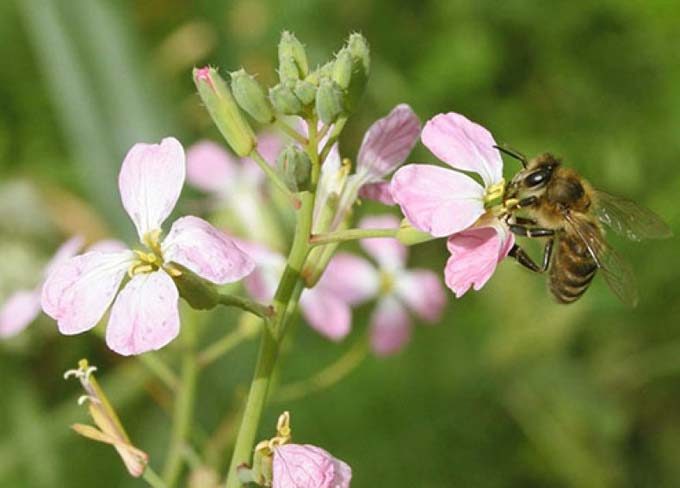

Description of the plant
Oily radish is an annual cruciferous plant that is not eaten. This culture is fodder and melliferous. It is also widely used as a green manure.
Plant height can reach 1.2-1.5 m. Shrovetide radish has straight, branched stems, cut, pinnate leaves, a tapropelled, branched rhizome, thickened in the upper part.
The culture blooms with small flowers of snow-white, pink, light lilac or purple. After the flowering period, the plant forms pods with rounded red seeds.
It is a crop highly prized for its quick and fruitful green mass growth during the cooler months of the year. It is drought-resistant, effectively cultivated in conditions of heavy, clayey soil.
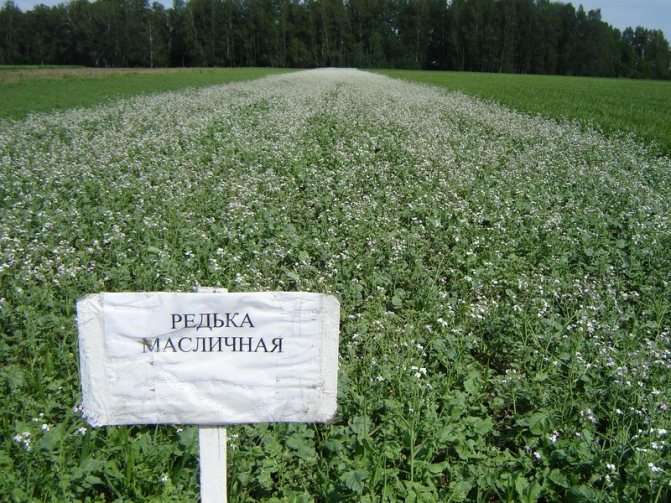

Benefits of oil radish
Of all the many green manure cultivated in Russia (lupine, clover, peas, alfalfa, sweet clover, buckwheat, rapeseed, etc.), many choose oil radish for the following reasons:
- Clay soils of any density are not terrible.
- Ideal loosening agent of soils, increases their air and moisture permeability.
- Uncut for the winter, the tops of the radish will retain snow on the site and protect the soil from freezing.
- Deep roots will extract any nutrients into the upper layers.
- The essential oils of the plant, remaining in the ground after its mowing and embedding in the soil, will protect the potatoes planted there from scab, prevent wireworms and nematodes from developing.
- Helps the development of beneficial soil bacteria and worms - suppliers of humus.
- Due to the closure of the green mass as it grows (mulching effect), it will not allow weeds to develop on the site.
- After mowing, it quickly decomposes in the ground, enriching it with minerals and humus.
Nutritional value and chemical composition
Oil radish contains a large amount of ascorbic acid, dishes prepared with its herbs significantly increase their nutritional value. In terms of chemical composition, oil radish contains: protein, lysine, crude fiber, calcium, potassium, phosphorus, magnesium, sodium, iron, copper, zinc, manganese and cobalt.
disadvantages
- The need for liming the site, since oil radish grows poorly on acidic soils - and the resulting alkaline environment is not suitable for all crops.
- The need for intensive watering during the period of seed hatching, before and during flowering.
- Difficulties in preparing silage from oil radish - due to the large amount of essential oils in the leaves and stems, and the need to add preservatives to the silage, otherwise it will ferment.
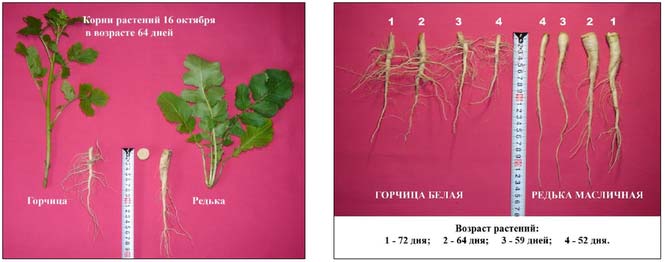

Application
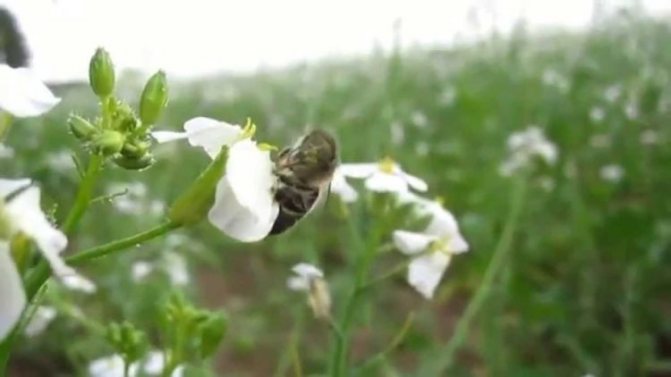

In cooking
Although this plant is considered an inedible crop, and the seeds of the oil radish are unfit for consumption, it can still be used to make delicious and rather nutritious dishes. Green mass is often used in cooking for making salads, and it is also added to cabbage soup.
It is recommended to soak the herbs in cold water for an hour before use. It contains ascorbic acid in its composition, therefore it is useful.
In medicine
The oil radish is famous for its essential oils, which are widely used in medicine. In addition, rich essences are obtained from radish, which are used as a basis for medicines - vitamins. Herbal preparations and teas are prepared from dried leaves of oil radish, which have a calming effect, relieve headaches and stress.
When losing weight
The oilseed radish contains 30% of the chemical composition of the protein, which can be used as a dietary food, which contributes to weight loss.Also, this protein is used for sports nutrition.
At home
Oilseed radish is widely used in everyday life, in particular, for industrial purposes. The plant is used to produce diesel fuel oil for tractors, combines and other similar equipment. An oily emulsion is produced from the radish, with which various metal devices are lubricated, it protects against corrosion.
In cosmetology
Essential emulsions, which are produced from oil radish, are part of massage oils often used in cosmetology. Such oils have a warming effect, help smooth the skin and relax. Radish essential oil is found in balms and hair conditioners. When used, hair becomes silky, shiny, and has a honey smell.
Oil radish as honey plant
During the flowering period, this is a wonderful honey plant: its small crucifers are rich in nectar, from each hundredth of sown oil radish, bees collect up to 3-4 kg of honey. Beekeepers even specially sow wastelands, if they exist in the vicinity of apiaries, with this plant.
Bees on oil radish plantations, if the last ripening was at the end of September, collect nectar even in case of autumn night frosts! Nothing is done to flowers from them. The honey produced by bees from the nectar of this plant has an excellent taste and only one drawback - rapid, after a couple of months, crystallization.
Cleaning
Young shoots appear 3-4 days after sowing, and the first mowing can be done in a month. If you carry out greening of winter crops, the radish is mowed and laid on the beds a month before sowing vegetables. To improve the quality of the soil for spring planting, the oil radish is left to winter in the garden bed.
Read also: How to properly put wine at home
Collecting seeds is carried out in the fall, the pods dry out and do not crack. The collected seed is stored in paper or linen bags in a dry, dark place.
Varieties
Essentially representing a weed (if not for its ability to be a soil improver), oil radish is the object of attention of breeders.
Even radish crops with predetermined properties are created: with a more powerful root system, or with an increased honey content, or with a greater accumulation of mineral substances in the leaf structure.
Breeders have developed varieties:
Sabina
Obtained in Belarus, it gives a huge amount of seeds - up to 35 centners per hectare. In complexes with other green crops (peas, green mass of corn) it gives excellent silage that does not require preservatives.
Nika
The variety, also created in Belarus, as a result of crossing the varieties "Raduga" and "Silentina". With vegetation periods from 90 to 120 days, silage harvesting begins when Nika reaches 40 days of age. Seeds with Nick receive up to 25 kg / ha.
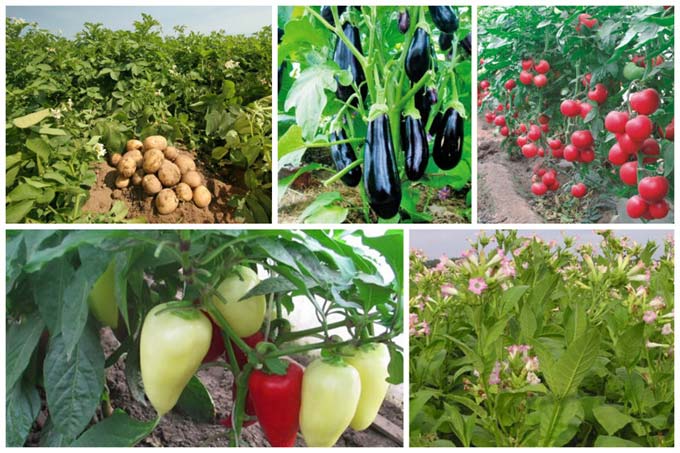

Brutus
Bred in Germany. The full growing season of this variety is 90 days, it is resistant to oversporosis, "black leg", bacteriosis. It belongs to medium-sized varieties, reaching only 120 cm.
Tambovchanka
The variety is already 40 years old. A highly resistant variety to droughts and frosts, the plant retains its viability even when the temperature drops to minus 5 ° C, therefore it is not suitable for southern regions. The stems have a huge amount of leaves, which makes this crop a good material for silage feeding fresh animals.
How to sow
With all the simplicity of seeding, there are some of its features that should be adhered to:
- The seeds are very light, 3 grams is almost a full handful. But for 1 sq. m you need to sow no more than 3 g.
- Although the number of seeds depends on the method of planting. If planted in rows (with a machine method of sowing), the consumption rate per 1 sq. m 2-3 g. In a garden / vegetable garden, when sowing is done manually, by scattering, the number of seeds per 1 sq. m. m can be increased up to 4 g.
- This rate can also be increased if sowing is done early, in April. In conditions of possible sudden cold snaps, germination may be worse, then 1 sq. m to guarantee up to 5 g of seeds are sown.
- It is imperative to assess the acidity of the soil, and if its pH is below 7.0, add dolomite flour or chalk (lime) to it.
- It makes sense to pre-fertilize poor soils with mineral fertilizers by scattering granules over the territory.
The best harvests in terms of marketable yield will be harvested from the plots, which were sown from May to August. The April and September crops will affect the yield, which will be lower than the summer ones. Oil radish, sown at the end of August - in September, will be ideal as a snow retainer. And the summer one is better to plow into the ground after mowing.
Such a multi-stage sowing method will allow to saturate the soil with useful substances to the maximum in anticipation of next year's harvest.
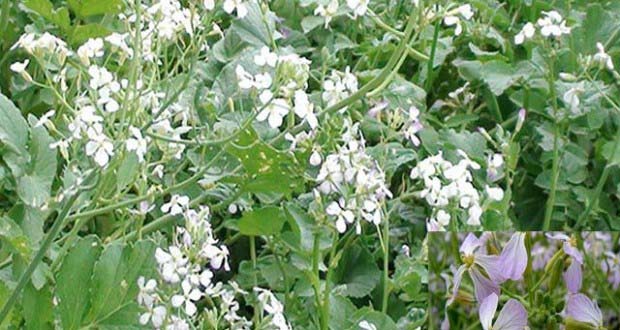

Soil preparation
Before sowing, the soil is loosened with a Fokin flat cutter. Plowing is only advisable for heavy clay soils. Small areas of the garden / vegetable garden can simply be dug to the depth of half a shovel bayonet or the length of the forks.
The main thing is that the top layer of the soil is loose. So that seeds can be embedded in it, and they can hatch and sprout, and the soil does not lose moisture.
The seeds are planted to a depth of approximately 4 cm.
Sowing methods
They depend on the purpose for which it is planned to grow the radish. Chaotic scattering of seeds over areas is ineffective: in a situation "where it is empty, where it is dense", the consumption of nutrients from the soil and their different growth will be uneven. Therefore, grooves are made into which the seeds are carefully planted, adhering to certain intervals.
- Growing as a green manure - the distance between the furrows is at least 15 cm.
- Like a honey plant - a distance of at least 20 cm.
- Growing to obtain seeds - at least 20 cm.
In the spring
The first sowing can be done in April. The main thing is that the soil has time to warm up to at least 10 ⁰С. If the temperature periodically drops below, which is easy to predict, the seeding rate per sq. meter needs to be increased.
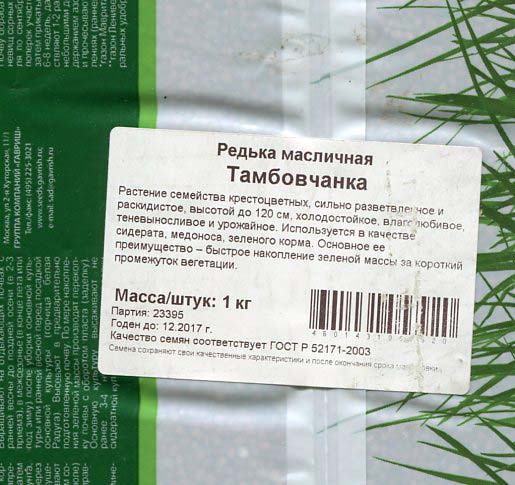

In summer
You can sow at any time. The main thing is to ensure watering of the seeds at the stage of sprouting. The areas are sown with oil radish immediately after the first harvest of vegetables. This allows, by the time of planting early ripening greens (salads, arugula) at the end of summer, to completely prepare the soil with sealed radish stalks, which means it is already enriched with useful minerals.
In autumn
If the plans include planting winter crops for the winter, then the last sowing of green manure must be calculated in such a way as to have time to cut it off and he managed to overheat at least a minimum. Since it usually takes 40 days from sowing to the beginning of flowering, you need to meet these deadlines, bearing in mind that you need to mow the grass before the seeds form.
Reviews of gardeners on the results of cultivation
According to gardeners and gardeners, the cultivation of oil radish can significantly improve the structure of the soil, enrich it with minerals, and abandon the use of mineral fertilizers.
Many summer residents who garden on difficult to cultivate soils, before growing vegetable crops, sow green manure in early spring, then, after mowing, embedding it in the soil and waiting 3 weeks, they begin planting vegetables and herbs.
The use of oilseed or, as it is sometimes called, oily radish as a green manure can significantly improve the structure of the soil, affect the quality of the crop, and fight weeds. Now you know what opportunities this crop provides to the gardener for obtaining bountiful harvests, when to sow radish, how to grow it correctly and harvest it.

